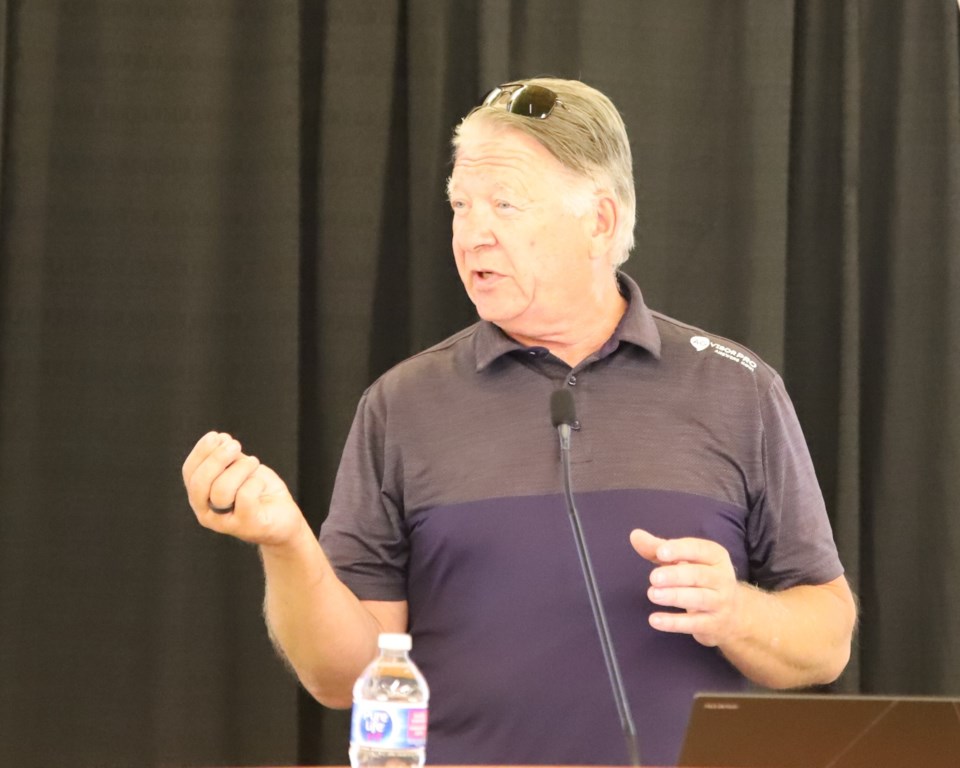OLDS — Artificial intelligence (AI) is going to play a big role in agriculture, but it won’t totally replace human beings, because people will need to make judgment calls on various farm or ranch-related questions.
That was the message Rob Saik, an agrologist, entrepreneur and international consultant, delivered July 29 during AgSmart, the Agri-Trade Equipment Expo Group's educational agriculture exposition, which was held July 29-31 at Olds College.
“I do believe that AI is going to play a great role in agriculture decision-making, but I don't think that farmers ranchers are going to abdicate decision making based on judgment to AI anytime soon,” Saik said.
He said AI will help farmers and ranchers make decisions and it can help in other ways, like cutting down on labour requirements, making the farm machinery repair process more efficient or dealing with climate issues.
Saik said AI is great for assessing probabilities, but not judgment.
“You have prediction and judgment; then you make a decision, and judgment is, well, it can't be easily coded. It relies a lot on human intuition,” Saik said.
He cited an example.
“(The) weather's been kind of rainy, canola is going to look pretty good. And should you or should you not spray for sclerotinia?
“That's a big issue, and I would defy you to still put a number as to whether you should or shouldn't spray for sclerotinia,” Saik said.
“It'll come down to a judgment. ‘What's the price of canola? How tired am I? Is this the only week that I have with my kids at the lake? Is the agronomist pulling the trigger? Is the agronomist wanting to sell me fungicide? I don't know.’ So judgment is crucial.”
Saik said AI could be very useful in gauging the probability of disease and pest outbreaks, as well as yield prediction.
“Yield prediction is a big deal,” he said. “We still don't get that right.”
AI is already being used to drive farm equipment like tractors or sprayers.
“I was in a field in Yuma, Arizona this year,” Saik said.” They were shooting broad leaf weeds out of a lettuce crop with herbicide a dime apart. So they were taking out the broadleaf weed by seeing that weed and hitting it.”
“I think about a farm 10,000 acres or so, and you're trying to make a decision on where to spray, and the showers are really spotty, and so you've got these weather stations and soil moisture probes, and you got to look at all the data individually and make (a decision). AI should be able to tell you,” Saik said.
“You should be able to get up in the morning, and AI should be able to say, ‘you know what? It rained on the south, the north is dry, spray on the north.’ ‘Good, I'm going to marshal my team to the north.’”
Saik looked around the room, which featured several young farmers.
“What you're going to experience with this (AI) is really phenomenal, good and bad,” he said.
“A lot of it will come down not to the answers that you get, but the questions you ask. Because if you can't figure out how to ask the right questions, you're not going to get the answers right.”



